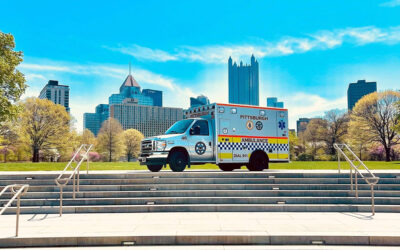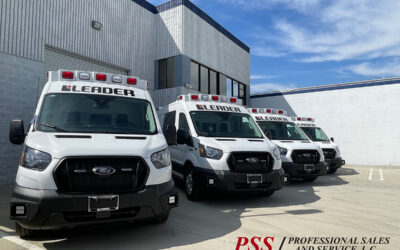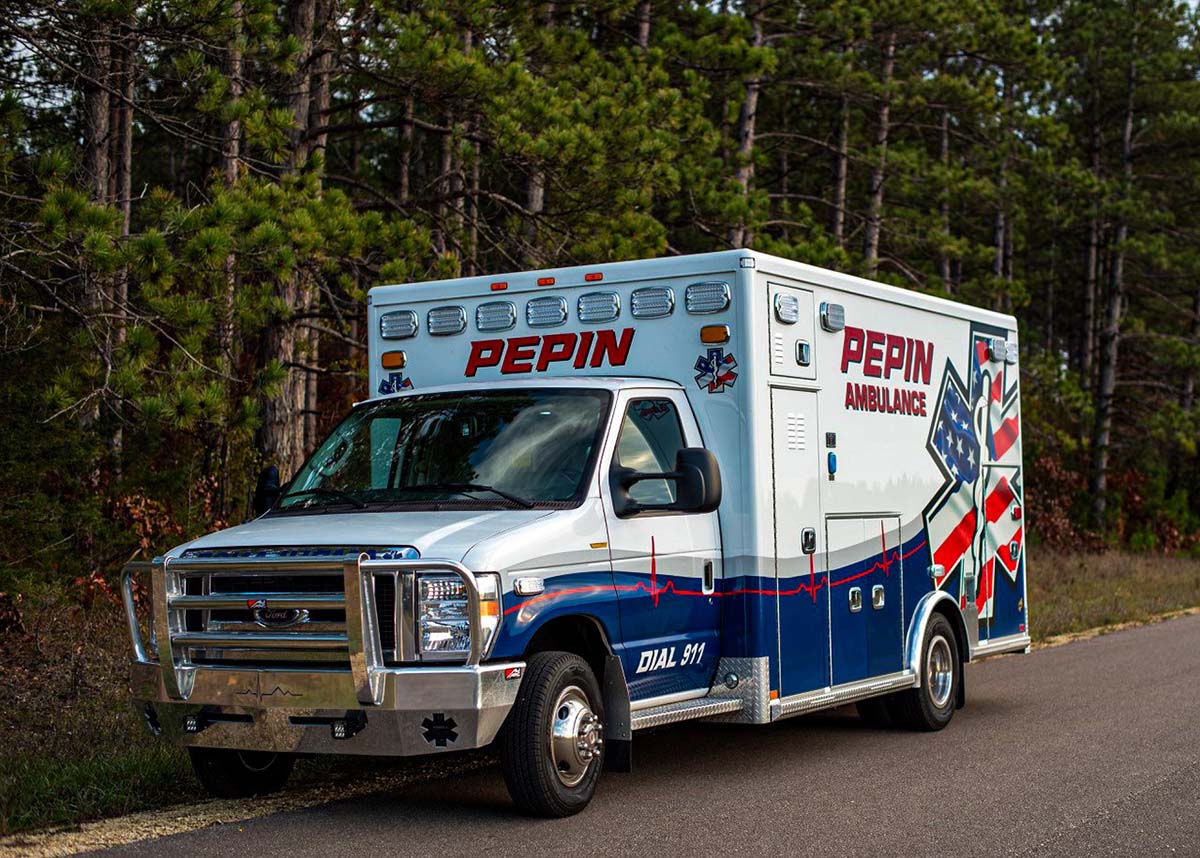
American Emergency Vehicles built this Type 3 Traumahawk ambulance on a Ford E-450 4×2 chassis for Pepin (WI) Emergency Ambulance Service. (Photos courtesy of American Response Vehicles.)
By Alan M. Petrillo
Pepin (WI) Emergency Ambulance Service operates a single ambulance out of a single station in the small town of Pepin, Wisconsin, on the Mississippi River.
The Ambulance Service covers 735 square miles and 1,904 residents with BLS services by one registered nurse, one paramedic, and ten EMTs — all volunteers.
The town is the birthplace of Laura Ingalls Wilder, the author of “The Little House on the Prairie” book series.
“Because of Laura Ingalls Wilder, we are a very touristy place,” observes Tina Cook, director of Pepin Emergency Ambulance Service, “with a lot of out-of-town visitors, especially during the summer months. Our district is pretty rural, with a lot of hills and bluffs, so we tend to have a lot of long runs. We’ve been in existence since 1973 and this is the first brand new ambulance we’ve ever purchased.”
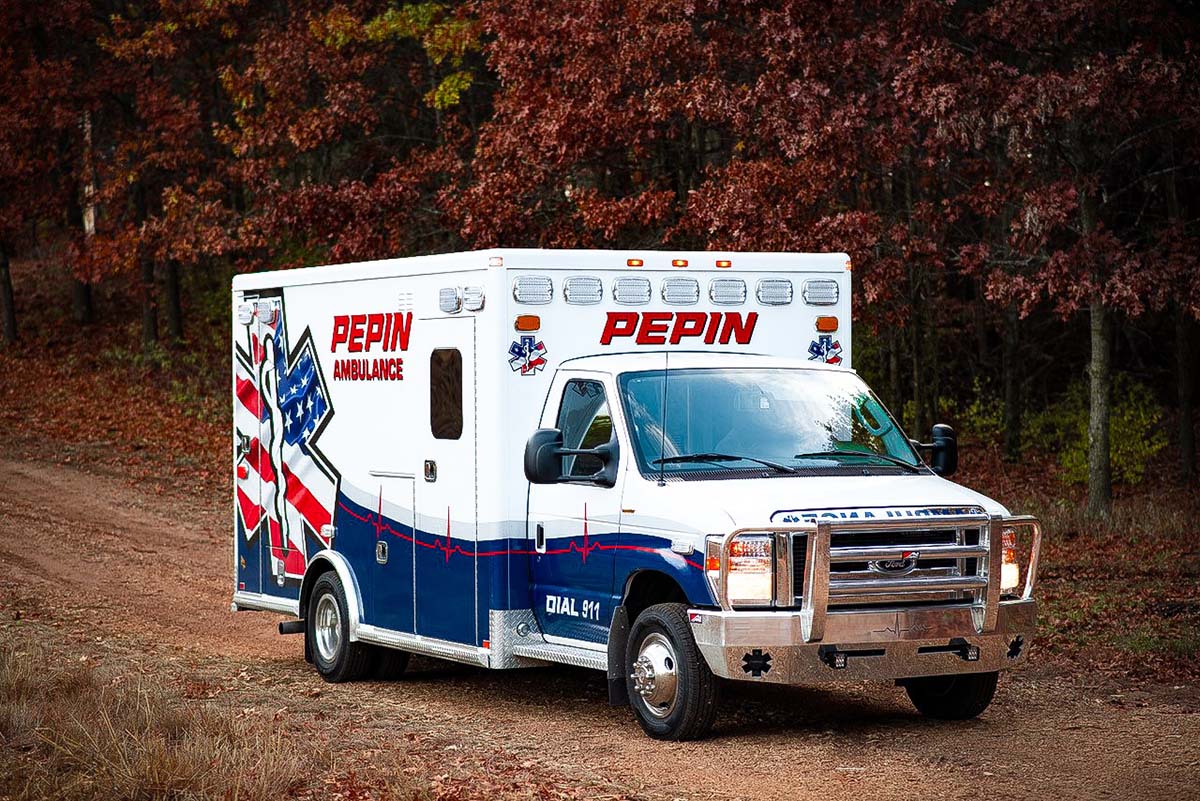
The new Pepin Traumahawk has a door forward design on the curb side, which is unusual on a Type 3 ambulance.
The rig that Pepin bought, says Ray Devlin, district sales manager East for American Response Vehicles (ARV), who sold the ambulance to Pepin, is an American Emergency Vehicles (AEV) Traumahawk Ford E-450 Type 3 ambulance powered by a 7.3-liter gasoline engine.
“Pepin went with a door forward design on the curb side of the vehicle, which is pretty rare in a Type 3 with its shorter wheelbase,” Devlin points out. “But we were still able to respond to all their needs inside the patient module with a countertop that allowed equipment to be within arm’s reach while securely seated and belted.” Devlin adds that the patient box has a CPR seat, attendant’s seat with a built-in child’s safety seat, and two-position squad bench, with all seats protected by Per4Max four-point harnesses.
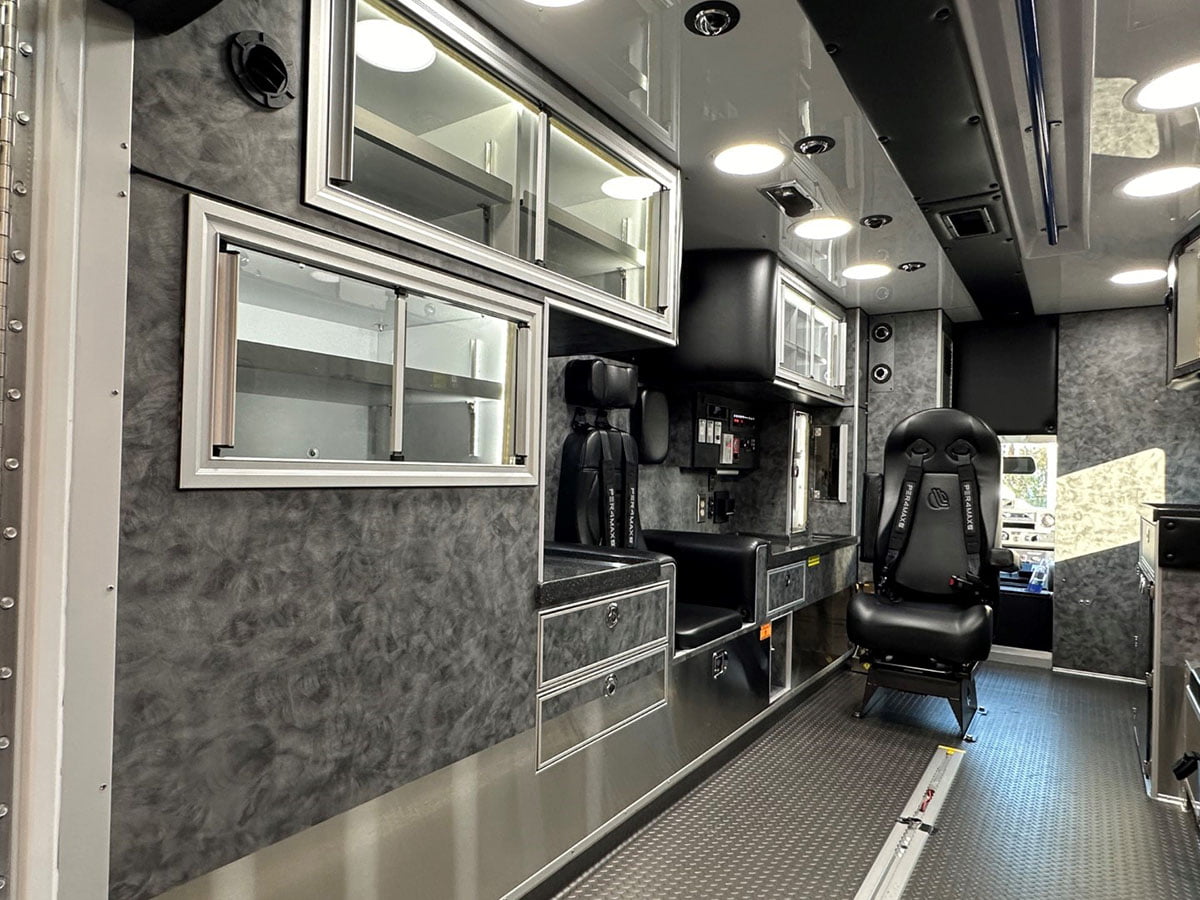
The interior of the Pepin rig’s patient box, showing the CPR and attendant seats.
Cook notes that Pepin had ARV install Stryker PowerLOAD and a PowerCOT XT in the Type 3 and add an Aliarc front bumper brush guard. “We have a lot of deer in our district, as well as a lot of cattle that escape their fencing,” she says. “With our single ambulance, we can’t afford downtime on the rig.” Pepin also chose a walk-through doorway between the patient module and the cab, instead of a pass through opening. “We wanted the ability to close a door between the two spaces so the Whelen Howler siren noise and radio transmissions wouldn’t interfere with the medic’s ability to treat a patient in the rear,” Cook observes.
Other equipment on the Pepin Type 3 includes an On-Spot tire chain system, a Vanner 1500 inverter, a Zico electric oxygen tank lift, a backup camera, power door locks, Dri-Dek matting in all compartments, and solid surface countertops in the patient module.
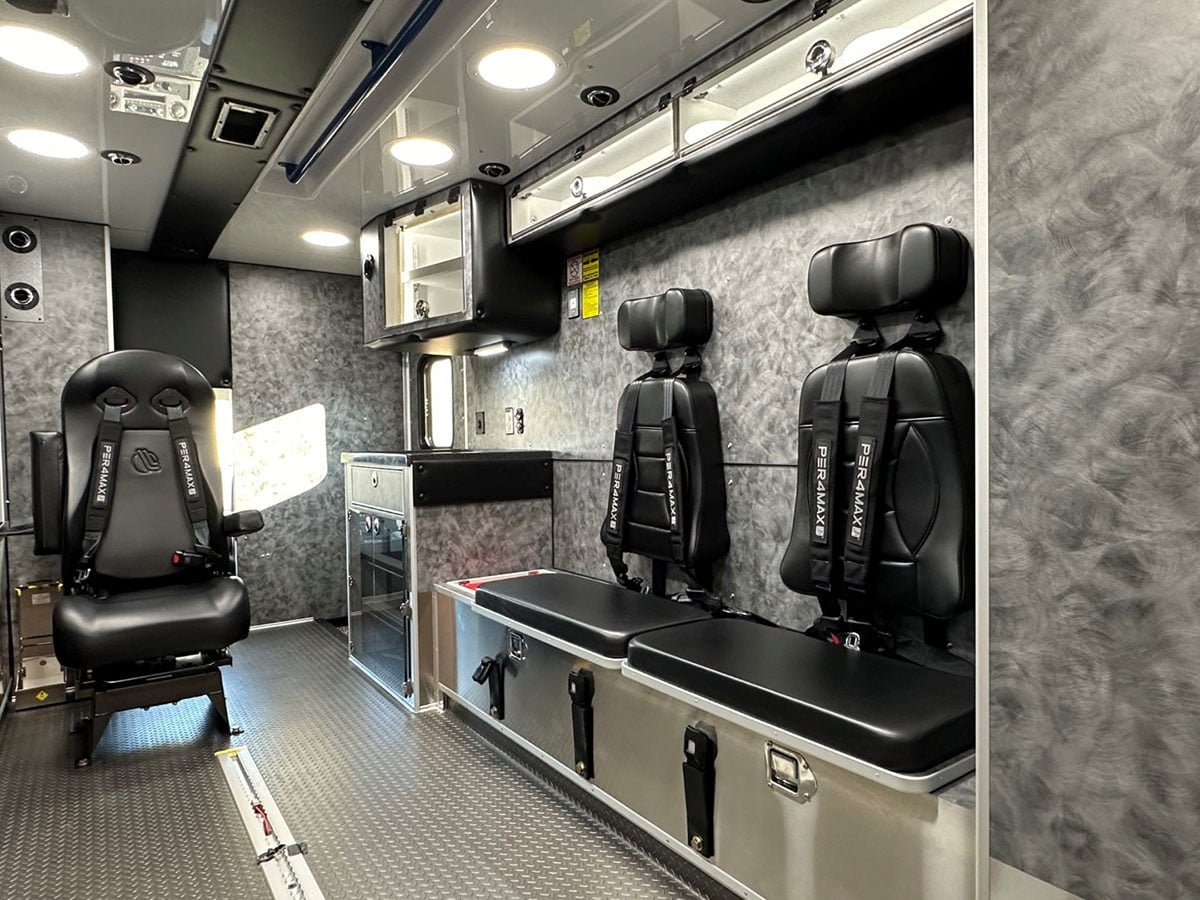
The squad bench in Pepin’s new Traumahawk has two seating positions. All seats in the rig are protected by Per4Max four-point harnesses.
Lighting on the Type 3 Traumahawk includes Whelen LED warning lights, Whelen LED scene lights, and Tec-Niq LED skirt rail lighting, ground lighting, cabinet strip lighting, compartment lighting, and link lighting along the inside of compartment door panels that come on when the doors are open.
ALAN M. PETRILLO is a Tucson, Arizona-based journalist, the author of three novels and five nonfiction books, and a member of the Fire Apparatus & Emergency Equipment Editorial Advisory Board. He served 22 years with the Verdoy (NY) Fire Department, including in the position of chief.


